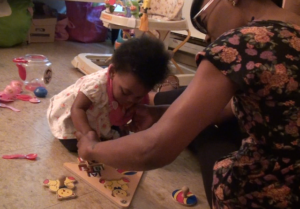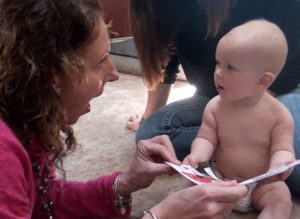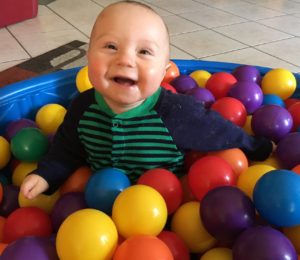 In order to prepare children born today to thrive in the global community of the 21st century, the National Education Association (NEA) has replaced the 3 R’s (Reading, Writing, and Arithmetic) with the 4 Cs: Critical Thinking, Communication, Collaboration, and Creativity. The goal of the NEA is to fully integrate the 4 Cs into every classroom in America. Let’s give our babies a head start and introduce them to these concepts before they get to Kindergarten!
In order to prepare children born today to thrive in the global community of the 21st century, the National Education Association (NEA) has replaced the 3 R’s (Reading, Writing, and Arithmetic) with the 4 Cs: Critical Thinking, Communication, Collaboration, and Creativity. The goal of the NEA is to fully integrate the 4 Cs into every classroom in America. Let’s give our babies a head start and introduce them to these concepts before they get to Kindergarten!
Critical thinking is the ability to look at problems in a critical manor that allows for problem solving strategies. Communication is the ability to share and exchange thoughts and ideas, ask questions, and discuss solutions. We have been talking about communication in the past 12 months of STEM Starts Now. Collaboration is the ability to work together for a mutual goal, using ones talent, expertise, and knowledge. Babies will not be doing a lot of collaboration yet, but it is important to lay the groundwork through parallel play (playing side by side) with you and other children. Creativity is the ability to come up with new and innovative ideas and approaches.
Let’s explore how to apply the 4 Cs to the activity of container play. In a situation where responsive parenting  is taking place, and you are able to engage with your baby during at the activity, there is a lot of opportunity for new learning.
is taking place, and you are able to engage with your baby during at the activity, there is a lot of opportunity for new learning.
Critical Thinking – Your baby attempts to fit a toy into a container and it will not go in because the container is too small. Your baby looks around, picks up a larger container and puts the toy into the larger container and it fits. Your baby was able to use critical thinking to build on his experience of spatial relations (understanding how things fit together) and solve the problem of fitting the toy into an appropriate container.
Communication – Your baby attempts to fit a toy into a container that is too small for the toy, so your baby looks at you and holds the toy up toward you, making eye contact and a facial expression and maybe even a sound asking for assistance. You respond to his communication by helping him find an appropriate container to fit the toy. He made his needs known and you listened and met his needs.
Collaboration– During the activity, you notice your baby picked up a medium size container, so you hand him a medium toy and he places it in the container. He attempts to put the lid on the container upside down, so you allow him some time to problem solve and when he cannot figure it out, you turn the lid around for him and he takes it back without becoming upset or frustrated and puts it on the container. You collaborated, or worked together to complete the task.
Creativity – Your baby turns the containers upside down and stacks them from largest to smallest, creating a pyramid, then knocks it over and builds it again. He has found a new, innovative, and fun use for these items by using creativity.
 You can foster all of these skills simply by providing your baby with the materials and staying near by to foster the skills for the activity. STEM skills are rooted in these four concepts and experts believe that by promoting these four Cs, children will have higher-level thinking, ingenuity, and the skills necessary to compete in the global society of today.
You can foster all of these skills simply by providing your baby with the materials and staying near by to foster the skills for the activity. STEM skills are rooted in these four concepts and experts believe that by promoting these four Cs, children will have higher-level thinking, ingenuity, and the skills necessary to compete in the global society of today.
References:
Barbre. J. (2017). Baby Steps to STEM Infant and Toddler: Science, Technology, Engineering, and Math Activities. Redleaf Press.
National Education Association. (2016). Preparing 21st Century Students for a Global Society. An Educators Guide to the Four Cs. Retrieved from http://www.nea.org/assets/docs/A-Guide-to-Four-Cs.pdf

